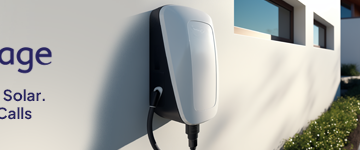Brad Templeton, Senior Contributor
2025-06-30 07:30:00
www.forbes.com
All the press is about fast charging stations, some of which are literally sited with gas stations … More
There are many different views on how EV charging infrastructure should be built, and financed. Today, almost all discussion revolves around “fast charging” at 50kW or more, which will usually refill a car in under an hour. This is due to the legacy of “gasoline thinking.” For a century, we drove cars with gasoline around until the tank said “E” and then looked for a place to fill-up, which took under 5 minutes. That’s a good experience, and it’s understandable why there’s so much effort to duplicate it. The more important question is should we?
Almost all news and investment activity in EV charging is around this gasoline fill-up problem. Faster chargers and more of them. 800v cars and chargers that can peak over 350kW. New battery designs that can get a usable charge in under 10 minutes. BYD’s demo of a partial charge in just 5 minutes in China. Charging stations which look very much like gas stations in their placement and style.
Everybody would like fast charging, all other things being equal. But they very much aren’t equal. Fast charging is very expensive, and the faster it is the more expensive it is. Wiring in hundreds of kilowatts isn’t likely to ever get cheap. 10 minute charges require a megawatt, and that’s definitely not easy or cheap. Imagine having 10 chargers at a station. If you consider the inherent energy in gasoline, a gas pump delivers 20 megawatts. Per pump. (In reality, because gasoline cars are around 30% efficient, that’s more like 6 megawatts worth, but it’s still huge.) You’re unlikely to ever duplicate that, or to want to pay the price to do it.
Fast charging stations today use a lot of expensive electrical gear. Tesla is smart, and it costs them about $30,000/stall to put in their stations, while non-Tesla stalls only get put in thanks to very fat government subsidies, and routinely cost over $200,000 each. That means getting a charge at these fast stations is pricey. The cost is typically around 40 to 60 cents/kWh, while the average cost at home in the USA (which recently increased a lot) is 16.26 cents, though often under 10 cents at night, and even less for people who put in solar power. It’s such a huge difference that while those who charge at home save large sums over what they used to spend on gasoline, fast charging stations can make your energy cost per mile be more than gasoline in a hybrid car. In addition, being expensive, it’s precious. It has to go in far fewer locations, and generally one must leave the stall as soon as charging is done to make space for somebody else.
So all other things are not equal. That’s without counting the time spent waiting at these stations or detouring to them, compared to the home or office or hotel where you sleep or work while your car sits where it was already going to sit anyway.
Office parking lots with solar panels nearby and slow charging for the cars that park there all day … More
The typical car is parked over 22 hours per day. And the average driver who drives 10,000 miles/year only needs to charge for under 2 hours/day, not at a fast charger, but at a slow “level 2” one. In fact, it only needs to charge for 7 hours/day, on average, at on ordinary dedicated 120v household plug, called “level 1.”
Slow chargers are cheap. In fact, there’s almost nothing in them, just a $5 computer, a switch, thick wires and a plug. The most expensive part is the wiring (if you want the Level 2.) Enough electricity is already present in almost every building in the world. Other than land cost, one can probably put in 50 to 100 slow chargers for the cost of a single CCS fast charging stall.
In the ideal future of the EV transition, there’s low cost, not particularly fast charging at just a subset of those parking locations cars spend just 2 to 8 of their 22 parked hours. Today, most EV drivers have that–over 80% of EV drivers can charge at home or work and never use fast charging in their home town, with very rare exceptions. If we can “charge where we park, rather than park where there’s charging” the EV experience becomes much better than the gasoline one in every way. When people ask me how long it takes to charge my EV, I tell them it takes less time than I spent getting gasoline in my last car. That’s true at home, and it’s almost true on road trips.
It’s hard to see wanting any other world. Yet many companies are building large EV gas stations hoping they can get in on being the “gas station of the 21st century.” And today, they have customers, because there is a small cohort of EV drivers who can’t charge at home or work, because they don’t have a driveway, or don’t own their home. But this is what we need to fix. All the subsidies and EV promotion laws should be aimed at trying to fix that, not at building EV versions of the gas station. Let’s make it easy for apartments and condos to put in charging, and for tenants to demand it. Let’s get curbside charging for streets where people don’t have driveways and park on the street at night. Let’s leave the gas-style EV stations for the few who can’t get that.
There’s more good news. Under 20th century rules, many buildings could not add EV charging because they didn’t have sufficient electrical service. New, smarter technologies (Disclaimer: I have investment in a company that provides this) allow any building to handle all its EVs without upgrading the electrical service.
The Exceptions
There are some cars that aren’t parked 95% of the time. Professional drivers/cabs, and people on long intercity road trips. There are many types of road trips. In most, cars are still parked 10 hours at a hotel or other sleeping stop, and 1-2 hours for meals and breaks. For more leisurely road trips, they are parked many more hours at “attractions” along the way. These cars also need much more charging during their day of long driving. Fast charging is needed, but it also should be located at the places people already stop, such as restaurants, some shops, and attractions.
At restaurants, 100kW is more than enough for most–in fact, if it’s too fast, you have to interrupt your meal to go move your car, because fast stations also don’t let you sit idle after you are done. They’re too expensive. The only cars that need really fast charging are those in a terrible hurry, who want to stop for a bathroom break every 2-3 hours and want to pick up 30-40kWh in the fastest time. (Most cars only charge fast when going from 0% to 50%.)
If we build the world where there’s EV charging in the places we already stop or park, the other needs are few. How many will pay large surcharges for 10 minute charges? Will they be enough market to justify building these cars and stations? Perhaps only if it gets cheaper.
Most Uber drivers actually do under 300 miles/day, often under 200. If so, they’ll need only a small amount of fast charging if they can get a cheap, slow “sleep charge.” A short break, for lunch or otherwise, will keep them in place, as long as there is charging where they stop.
Some Fleet vehicles (particularly heavier ones with shorter range) may want to run multiple shifts, or may need a larger recharge mid-shift. These do want their charging to be fast. If a fleet sees full utilization, and charging time is downtime, this is an instance where you want it to be as fast as possible. If utilization is not full, though, you just rotate vehicles so some are charging and others are working, and you don’t need the charging to be as fast.
The Future
Tesla keeps promising their cars will fully drive themselves “this year,” and has predicted that each year for almost a decade. But one thing that’s actually coming is cars that can make short drives at off-peak times on quiet roads and in office complexes at low speeds. That’s a car that can take itself to charging. as long as an attendant or robot (or the car itself, which is a robot) can plug it in. When that arrives, you no longer need charging where you park, you just need charging lots within a moderate distance of where you park. Cars needing a charge can slip off when their owner is asleep or working or staying for a while. Remember that the average car needs less than 2 hours of slow charging per day. Forget “gasoline” thinking–this is a car that just is always charged as if by magic, with no electrical wiring, and very limited use of fast charging.
Robotaxis, on the other hand, though able to drive to where they charge, actually do want faster charging to get back to work. Though in this case 25kW does the job–that is what Tesla has chosen for the CyberCab.
Enhance your driving experience with the P12 Pro 4K Mirror Dash Cam Smart Driving Assistant, featuring Front and Rear Cameras, Voice Control, Night Vision, and Parking Monitoring. With a 4.3/5-star rating from 2,070 reviews and over 1,000 units sold in the past month, it’s a top-rated choice for drivers. The dash cam comes with a 32GB Memory Card included, making it ready to use out of the box. Available now for just $119.99, plus a $20 coupon at checkout. Don’t miss out on this smart driving essential from Amazon!
Help Power Techcratic’s Future – Scan To Support
If Techcratic’s content and insights have helped you, consider giving back by supporting the platform with crypto. Every contribution makes a difference, whether it’s for high-quality content, server maintenance, or future updates. Techcratic is constantly evolving, and your support helps drive that progress.
As a solo operator who wears all the hats, creating content, managing the tech, and running the site, your support allows me to stay focused on delivering valuable resources. Your support keeps everything running smoothly and enables me to continue creating the content you love. I’m deeply grateful for your support, it truly means the world to me! Thank you!
BITCOIN
bc1qlszw7elx2qahjwvaryh0tkgg8y68enw30gpvge Scan the QR code with your crypto wallet app |
DOGECOIN
D64GwvvYQxFXYyan3oQCrmWfidf6T3JpBA Scan the QR code with your crypto wallet app |
ETHEREUM
0xe9BC980DF3d985730dA827996B43E4A62CCBAA7a Scan the QR code with your crypto wallet app |
Please read the Privacy and Security Disclaimer on how Techcratic handles your support.
Disclaimer: As an Amazon Associate, Techcratic may earn from qualifying purchases.






































![[Gigastone] Micro SD Card 32GB 5-Pack, Gaming Plus, MicroSDHC Memory Card for…](https://techcratic.com/wp-content/uploads/2025/07/619ev8iBvzL._AC_SL1000_-360x180.jpg)







































